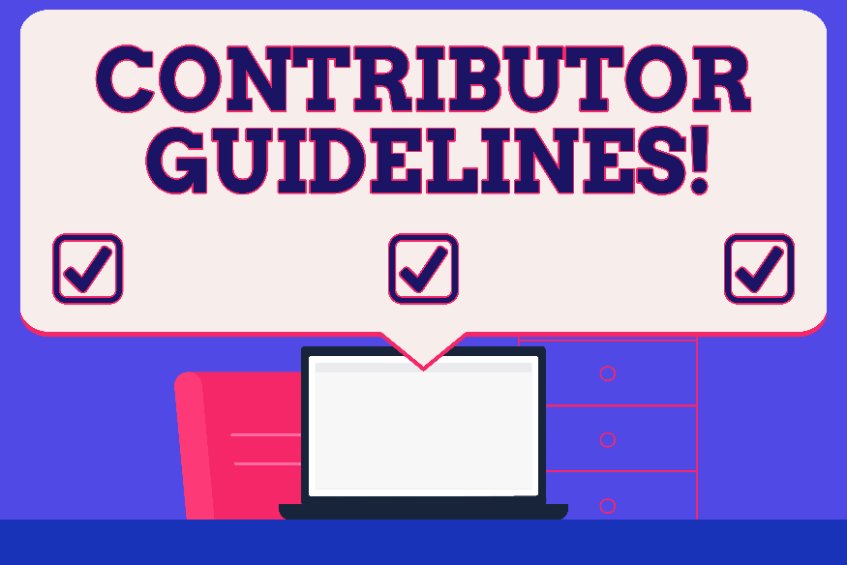
Contributed content refers to any content submitted to a publication or platform by an individual who is not a journalist. This is typically in the form of articles and blogs to trade publications, industry journals, magazines and blog platforms. Contributed content can also be video content, interviews or infographics. Research shows that 92 percent of editors prefer contributed content from industry experts over journalists because these thought leaders can address audience problems with real-world experience from the trenches. Contributed content is a powerful way to build brand awareness, establish credibility and position your firm’s expertise with audiences who can reap its benefits.
Six Editors’ Expectations for Contributed Content

Every publication has internal guidelines for the type, format and subject matter of the content they use. Meeting editors’ needs requires careful research and planning. Follow these suggestions to increase the likelihood that your submitted content will be approved for publication.
- Editors expect contributors to know their audience. A publication’s audience is its lifeblood. Prospective authors need to understand the profile of the publication’s readers. That includes industry trends, challenges, growth potential and overall scope of the marketplace. Review the publication’s website, media kit and editorial calendar to better understand what readers and editors seek. When developing and submitting contributed content, be sure it addresses the needs, pain points and profiles of the outlet’s readers.
- Editors expect authors to read and follow their submission guidelines. Every publication has a set of specific editorial guidelines. These may include word count requirements, rules about hyperlinking or detailed style guides. They also can include any outlet-specific regulations, such as formatting, graphics and topics. Some are more detailed than others, so don’t forget to read other content in the publication. Then, model your submission after those successfully accepted articles. It’s important to know that most outlets require exclusivity, so don’t submit the same article to multiple outlets. Instead, identify key publications in your marketplace and offer articles to editors on a first-come, first-served basis.
- Editors expect a unique and engaging voice. Editors are looking for topics that are captivating, unexpected and even controversial. They want something newsworthy, from a fresh perspective, a new spin on a familiar but valuable topic or a proposed solution to their readers’ challenges or pain points. It’s important to review previously published pieces to see what topics a platform has already covered and where a hole or need can be filled. Experts who share personal experiences, case studies and lessons learned through engaging storytelling techniques can translate vital takeaways to other leaders in their field.
- Editors expect an expert perspective. It isn’t enough to be controversial or attention-grabbing. Contributed content is well-informed, credible and backed by proven sources, including the author’s own opinions. To provide real value, content must go beyond general observations. Instead, editors want content that provides real-world solutions or actionable steps from proven experts. For example, the online publication The Enterpriser’s Project details exactly what its editors look for in expert contributors. “We feature commentary from authors at all levels of the organization—from engineers to CEOs. We also love the perspective of analysts, consultants, academics, and others who have a wide view of the IT and tech landscape.” Not every publication identifies its ideal contributors so clearly. It’s vital to do your research and ensure that your expert opinions are a fit for the outlet.
- Editors expect content driven by value, not promotion. Just because editors want proven expertise doesn’t mean the content should focus on your accomplishments and accolades. Contributed content is not the place for self-promotion. Instead, establish expertise through valuable insights shared with readers, presented in a way that enables them to take action. Avoid bias and product or company mentions. In other words, don’t include anything that reads like an advertisement or sales copy. Consider, for example, the editorial guidelines from Fast Company, which state, “While we encourage drawing from your own experiences in business to support your ideas, over-the-top self-promotion (of yourself or your company) will prevent us from publishing your article.” Editors reject almost half of contributed content because it is overly promotional.
- Editors expect submissions to be well-written and proofread carefully. This doesn’t just mean running content through a spell-check system. Editors expect correct spelling and grammar, but they also seek succinct and clear language, sensible organization and thorough vetting of information and links. To bring in another fresh perspective and to ensure the clarity of ideas and language, ask a trusted colleague to proofread your content. Do not create content in a vacuum. By strategically gathering feedback from individuals in multiple areas of expertise, including writing, editing and subject-matter expertise, content can be sharpened for its best performance. It’s important to understand that even the most carefully crafted content can be edited by the publication before being published, often without notifying the author. For example, the contributor guidelines for University Business state, “If your column is accepted for publication, we reserve the right to edit it for clarity or length. If time permits, we will send it back to you for final review. However, in some cases our publishing deadlines may preclude us from sending you the edited version for review and approval.”
Facilitate Growth Opportunities
While traditional publishing has changed dramatically over the years, strategic contributed content is a growing and powerful medium for companies that want to attract attention, demonstrate thought leadership and create a competitive edge in the marketplace. In the age of information, trade magazines, news websites, business journals and blogs are vital platforms for sharing knowledge. Every company possesses expertise that can greatly benefit target markets. To showcase thought leadership and reach target audiences in new ways, contribute to the appropriate publications and media outlets. Simply stated, consistently publishing articles creates widespread opportunities for business growth by increasing visibility, credibility and name recognition in your marketplace.
